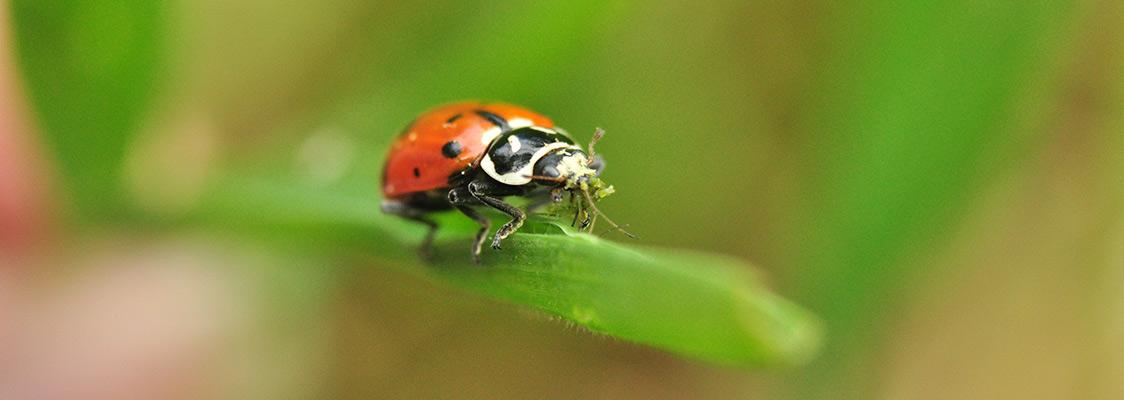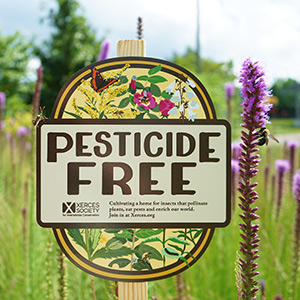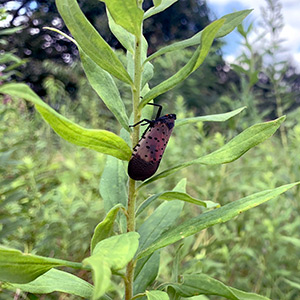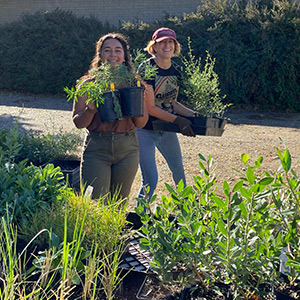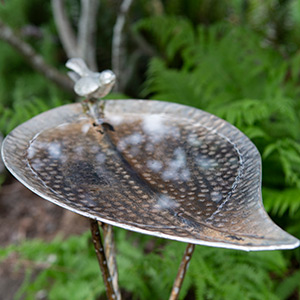The vast majority of invertebrates serve vitally important roles in our environment. They control pests, pollinate flowering plants, decompose waste, and provide food for other wildlife. Only a very small number of invertebrates are pests. Yet, the pesticides frequently used to control unwanted plants and animals rarely distinguish between beneficial invertebrates and those which cause harm. Pesticides often cause unintended consequences and disrupt the natural systems that sustain us. But, because pesticides are valued for their toxicity to pests, unfortunately the risks they pose are often accepted—even when healthier, more sustainable options are available.
“Pesticides” is an umbrella term that includes – but is not limited to – insecticides, herbicides, and fungicides.
Accept some cosmetic damage in your pollinator habitat
Insect feeding rarely harms healthy, hearty plants, and ultimately this means your plants are being used as resources by many different invertebrates and animals!
Prioritize pesticide-free prevention strategies
Use preventative strategies to keep plants healthy, and eliminate conditions that favor pests. This will create healthy plants that are more resilient to pest infestation.
Confirm pests are present before intervening
Confirm that any “pest” is actually a problem, and use non-chemical management strategies when intervention is needed. This could include hand picking pests, cutting and removing parts of infected plants, mulching weeds, or using ergonomic weeding tools.
Attract natural pest predators
Add plant diversity to create habitat for natural enemies like insect predators and parasitoids, that will help keep pests in check. Luckily the same plants that benefit pollinators are also used by natural enemies!
Buy pollinator-safe plants
Buy bee-safe plants. Many nursery plants are grown with harmful and long lived pesticides, in part due to consumer demand for aesthetically appealing, pest-free plants. Ask your nursery for organic plants, avoid plants treated with long-lived pesticides, and ask your nursery about their growing practices.
Manage mosquitoes ecologically
Don’t hire companies to spray for mosquitoes and other nuisance pests in your yard. Studies suggest that insecticide residue from these sprays can kill bees, butterflies, and fireflies – not just mosquitoes. Instead, remove standing water around your property and use personal protection.


